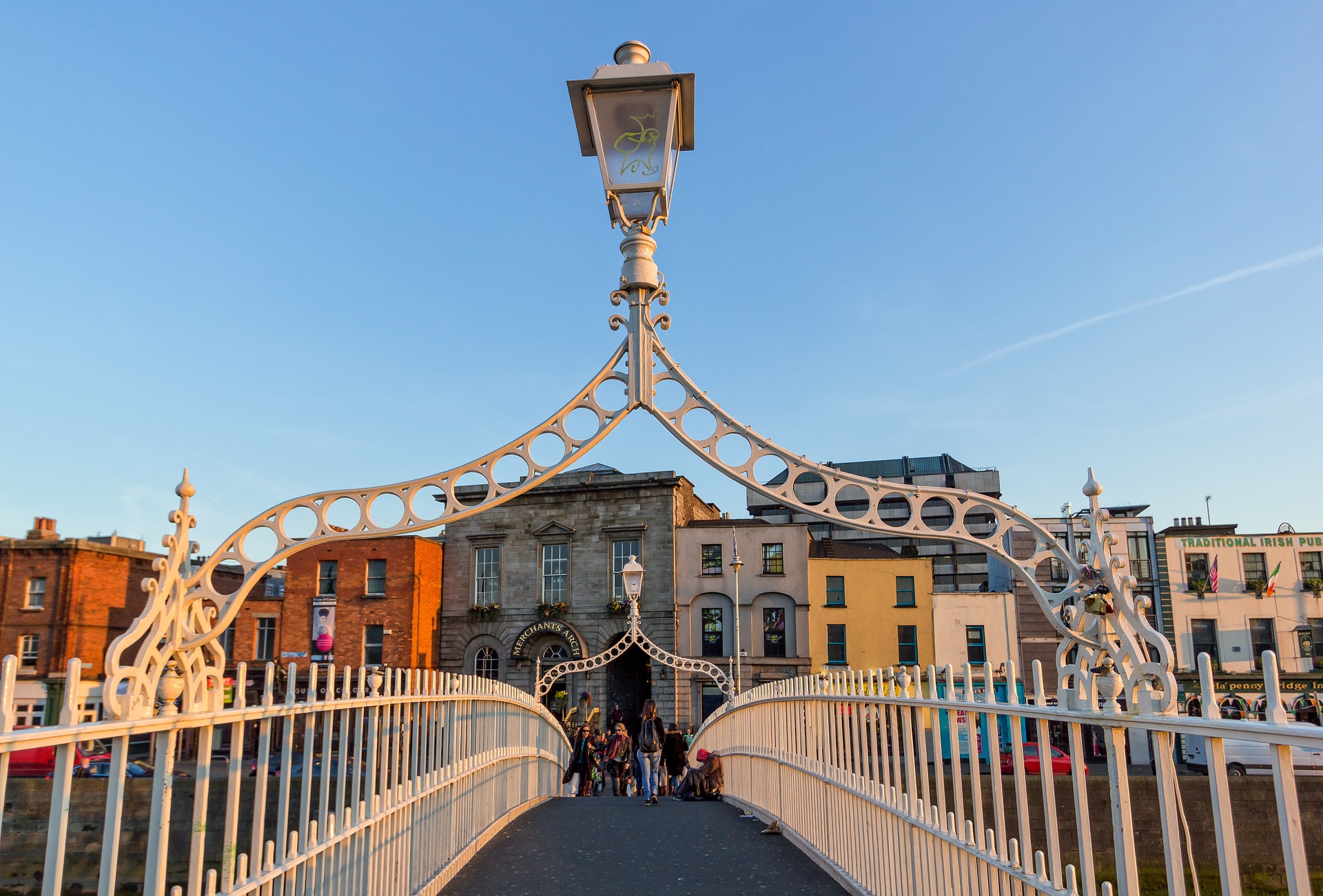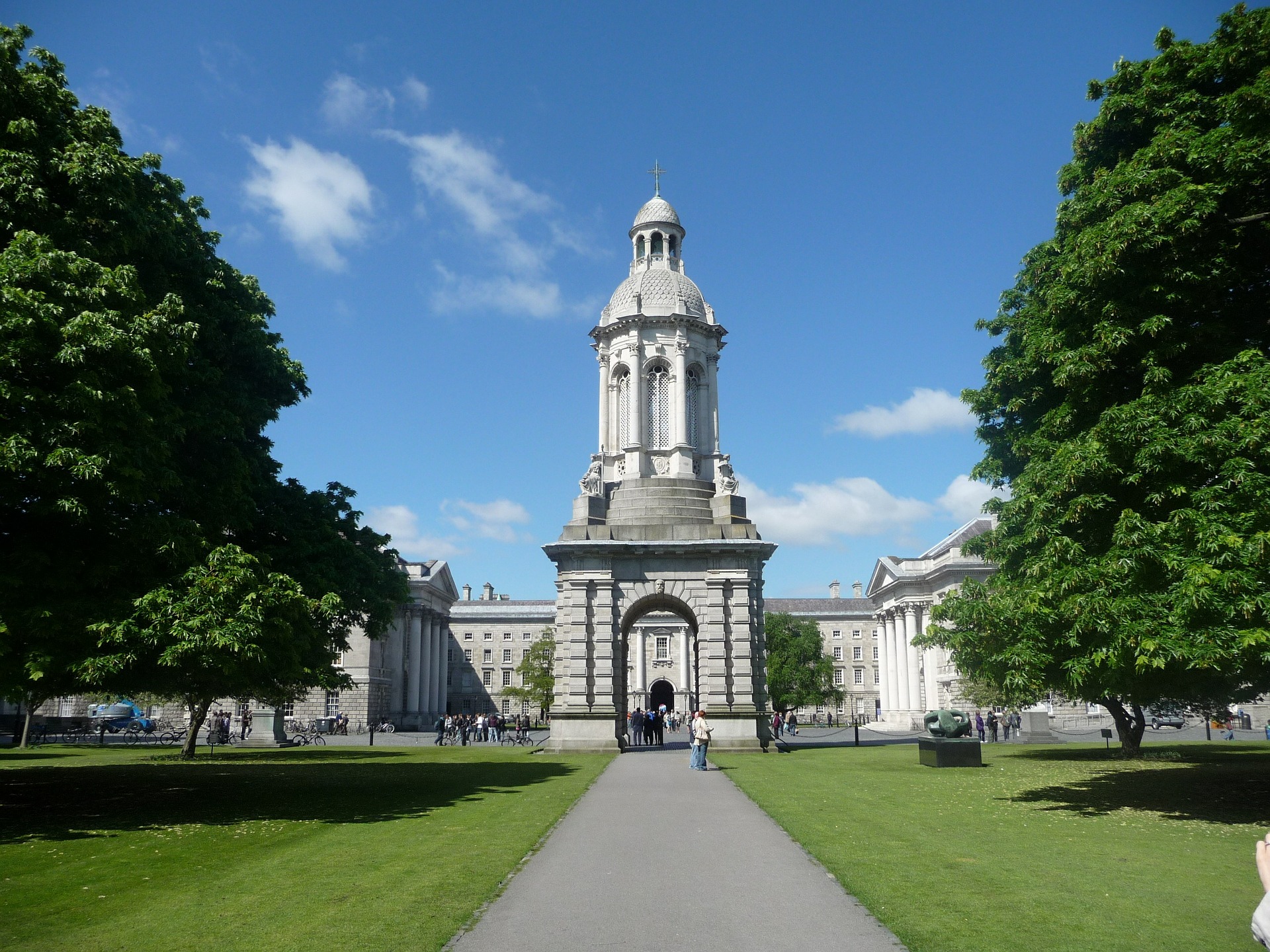
The green island of Europe – Ireland, home of Guinness, old Celts, st. Patrick, and numerous medieval castles. Located on the country’s east coast is its capital – Dublin. The name is of Viking origin, and it means black pool.
Ireland was a country from which a lot of people emigrated to other parts of the world, mostly to America. Today’s story is completely different. From a once poor and underdeveloped country, Ireland grew to one of the fastest growing European economies, and it is a seat of European high-tech industry, with companies such as Microsoft, Intel, HP, and Google all having offices here. Besides foreign corporations, Ireland grew its own as well, one of the most famous is probably Ryanair, Europe’s largest low-cost airline.
Most tourist visits to Dublin start from O’Connell street. Buses that drive from the airport will drop you off here, and you will find an abundance of hostels and hotels, in the surrounding streets. Two of the main attractions of O’Connell street are the post office building (which kind of resembles a parliament), and the Spire of Dublin – a huge obelisk that was erected in 2003 while the city went through a revamp to create more pedestrian zones to make it more appealing to tourists.

Liffey river flows through the city and on its northern bank, you should check the imposing Custom house, which used to be, well customs. Numerous bridges cross the river and the most famous is the Liffey Bridge, more commonly known as the Ha’penny Bridge. The name derives from the price of crossing the bridge in the past which was half a penny.
On the south side of the Liffey river, you will find most of the attractions like the St. Patrick Cathedral (from the 12th century). It is the largest cathedral in Ireland dedicated to the country’s patron saint – Saint Patrick. The connection between Ireland and the clover comes from St. Patrick. He used the three-leaf clover to explain the symbolism of the holy trinity to the people, making it one of the country’s icons. Besides the St. Patrick cathedral, there is the Christ Church, the second most famous church in Dublin. The church has a fascinating gothic arch bridge that connects the two parts of the building, and it kind of resembles a medieval castle rather than a church.
The most famous university in Ireland is Trinity College. It is a true science campus whose beauty will stun you from the moment you pass through its gate. Right in the neighborhood, there is the Bank of Ireland, another fascinating building build originally to be a parliament building, but was turned into a national bank while the parliament was moved to Leinster House.
Shopping
Two of the city shopping streets are Henry and Grafton Streets. In Grafton street, you will find the most famous Irish brands, like the Brown Thomas Shopping Center, Weir’s jewelry store, or the very popular Bewley’s cafe. On the very end of the street, don’t miss the Stephens Green shopping mall.
On the other side of Liffey, on Henry street don’t miss the ILAC, Jervis, and Arnott’s shopping centers where you can find luxury clothes. If you prefer to shop outside the city center, head to Blanchardstown, a shopping center where you will find famous brands like Bershka, Ecco, H&M, Zara, etc, it’s also where the Crowne Plaza hotel is located. Another big shopping center is Dundrum also hosts many famous clothing brands.
Souvenirs
Most famous chain of souvenir shops in Dublin is Caroll’s. They are located in multiple places in the city and every one of them is constantly crowded. That’s no surprise given how good the Irish are good at marketing their brands. A few minutes in one of the shops and you will want to buy half of the items there. Most of the souvenirs are divided by a certain theme like clover, Celtic cross, Harp, Guinness, Jameson, or the Finnian’s – legendary Irish leprechaun figurines that usually carry a happy note or a prayer. There the unavoidable CDs with traditional Irish music, flags, T-Shirts, and green hats especially popular during St. Patrick’s Day.

Nightlife
An area with the largest concentration of pubs, bars, and clubs is the Temple Bar, a part of the city that is the main destination for weekend fun but also for after-work parties during the week. There are over 20 bars and over 70 restaurants and caffe’s in addition to many hotels, hostels, and shops. The entire area looks like a bee hive with all the crowd, and during evenings and nights, there is loud music from all over.
The most famous pubs are Oliver St John Gogarty which also has a hostel and a restaurant. The Temple Bar, with its unique red facade, was often rewarded as the best Irish music pub. Fitzsimons Bar – is also an accommodation provider and a club. The Ha’penny Bridge Inn, a great place to experience the atmosphere of genuine Dublin.
The oldest pub in Dublin is The Brazen Head dating all the way back to 1198. It’s located near the Christ Church Cathedral and the Guinness factory, and it is definitely worth a visit. While you’re at it, don’t forget to try the world-famous Guinness Beer!
For hard-core Guinness fans, I recommend checking this list of 10 pubs for the best Guinness in Dublin.
As far as the clubs go, you would want to check the Club M, located within the Temple bar, The Vaults – a great combination of bar, restaurant, and club, Ri-Ra – great place to hear some good sould and funk, Bruxelles – a rock club in Grafton street, Lillies Bordello – a place for celebrities.
If you are looking for some more fun, here is a list of fun outdoor activities to do in Dublin.
Accommodation
Since Dublin became a very desirable tourist destination in recent years, especially for the younger crowd, you will find a rich offer of all sorts of accommodation. From hostels and apartments to popular B&B and even luxury hotels.
The best part of town to find affordable accommodation is around the Temple Bar and O’Connell street. It is also very practical if you want to experience the nightlife since you’ll be very close to it. If you think of visiting Dublin for St.Patrick’s day on March 17th, consider that almost the entire city is booked out many months in advance. This is the largest Irish holiday and people come to enjoy the festivities from all over the world.
If you plan to explore Ireland on your own make sure to check Ireland Road Trip Planner, for tips on the perfect budget itinerary!
Public transport
Dublin has a good bus network which is operated by Dublin Bus company, and it includes tram and rail as well.
Dublin Bus is the most used form of public transport, they are double deckers and they have several different types of lines.
The Xpresso line is a line with fewer stops, they usually operate during the workweek, and you will recognize them by a little x sign next to the line number. Airlink, is the name for the fast line between the airport and the city, and the night lines are called the Nitelink you will recognize them by the little n sign next to the line number.
Dublin also has a tram – LUAS. There are two lines, red and green. Red line is probably the more important if you are visiting since it connects two main rail stops – Heuston and Connolly, it passes near Four Corts and the National Museum. Unfortunately, the two stops don’t cross.
The Leap card is something similar to London’s Oyster card. Basically you “fill” a certain amount of money on it and then you spend it by taping it on a machine on a bus, tram, or train.
